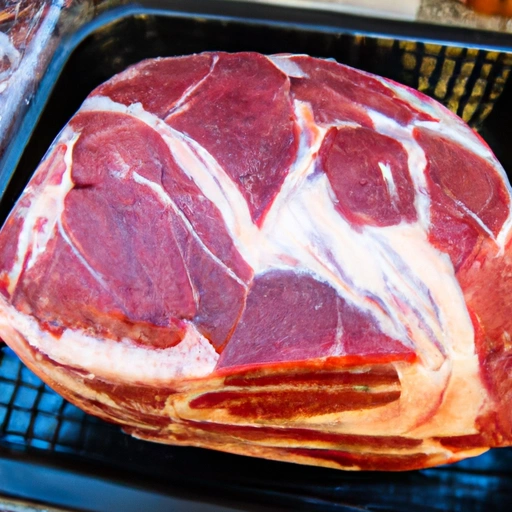Pork Butt
Description

Pork butt, also known as Boston butt, is a cut of pork that comes from the upper part of the shoulder from the front leg and may contain the blade bone. Despite its name, it does not come from the rear end of the pig. It is a popular cut in American cuisine but is also used in various recipes around the world. Pork butt is well-marbled with fat, making it flavorful and ideal for slow-cooking methods like roasting, smoking, and braising. This cut is often used in pulled pork and can be found in both bone-in and boneless varieties. When measuring pork butt for recipes, American units such as pounds (lbs) and European units like kilograms (kg) may be used, with 1 pound being approximately 0.45 kilograms.
Common uses
Pork butt is often used in recipes that require slow cooking to break down the tough muscle fibers and connective tissues, resulting in a tender and flavorful meat. It is commonly used in pulled pork sandwiches, stews, and for making sausages. The fat content in pork butt also makes it suitable for grinding and incorporating into ground pork dishes.
Nutritional value
Calories
A 3-ounce (about 85 grams) cooked serving of pork butt contains approximately 210 calories.
Protein
That same serving size offers about 23 grams of protein, making it a good source of this essential nutrient.
Fat
Pork butt is quite fatty, with around 14 grams of fat per 3-ounce serving.
Carbohydrates
It contains no carbohydrates unless it is prepared with sauces or marinades that include sugars or other carbs.
Vitamins
This cut provides B vitamins, particularly vitamin B6 and B12, which are crucial for energy metabolism and red blood cell formation.
Minerals
Pork butt is also a source of minerals such as zinc, selenium, and phosphorus.
Health benefits
The protein in pork butt contributes to muscle maintenance and growth, while the B vitamins help with various metabolic processes. The minerals found in pork butt, like selenium, play a role in antioxidant defense and thyroid function.
Potential risks
However, due to its high fat content, excessive consumption of pork butt can lead to increased cholesterol levels and associated health risks. It is advisable to consume it in moderation, particularly for individuals with heart-related health concerns.
Common recipes
Pork butt is a star ingredient in recipes like pulled pork, carnitas, and various types of barbecue. It is also used in stews, chilis, and to make flavorful sausages.
Cooking methods
Common cooking methods include slow roasting, smoking, braising, or slow-cooking in a crockpot. These methods allow the fat to render and the meat to become tender over several hours.
Pairing with other ingredients
Pork butt pairs well with bold spices and flavors such as barbecue sauce, cumin, paprika, brown sugar, and apple cider vinegar. It also complements side dishes like coleslaw, baked beans, and cornbread.
Summary
Pork butt is a flavorful and versatile cut of pork that shines in slow-cooked dishes. Its rich taste and tender texture when cooked properly make it a favorite in a variety of recipes. Although nutritious in moderation, its higher fat content suggests it should be enjoyed as part of a balanced diet.